Blue Plymouth Rock: Breed Profile
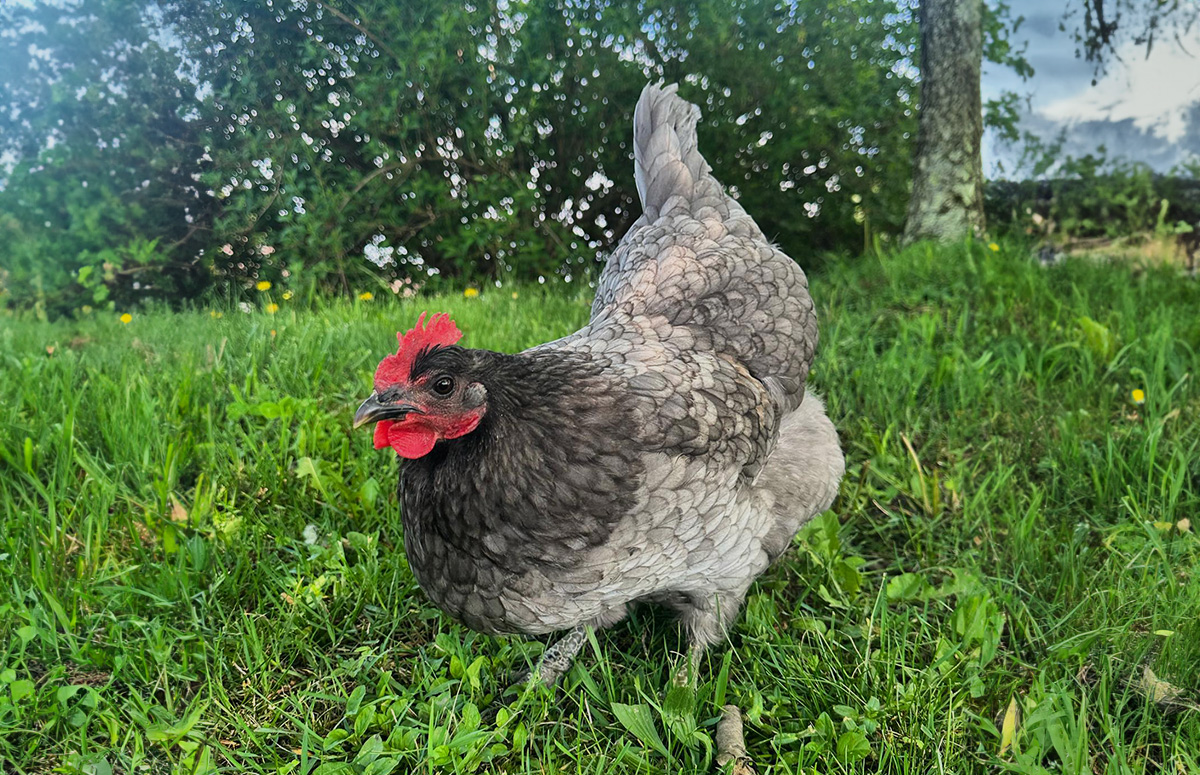
Blue Plymouth Rock chickens stand out as a beautiful heritage breed with gorgeous blue-gray plumage. Plymouth Rocks have won the hearts of chicken keepers and poultry enthusiasts worldwide. This less common variety of the Plymouth Rock breed is resilient, cold-hardy, and beginner-friendly.
Characteristics
While the Blue Plymouth Rock’s charm is undeniable, it remains less popular than the Barred Plymouth Rock. The Barred Rock, known for its black and white feathering, has earned its place in the spotlight due to its amazing barred coloring.
In contrast, the Blue Plymouth Rock is a less common and lesser-known variant of the Plymouth Rock family. But its striking blueish-grey colors deserve a place in the spotlight.
| Eggs | Up to 200 eggs per year |
| Egg Color | Brown |
| Egg Size | Large |
| Weight | 7.5 – 9.5 lbs |
| Hardiness | Cold |
| Temperament | Docile, but assertive |
| Beginner-friendly | Yes |
| Color | Blueish grey |
Plymouth Rocks don’t have feathers on their legs. In general, their feathers are fluffy, making them look bigger than they actually are.
A Blue Plymouth Rock has a deep breast and long keel for meat production. They are an excellent dual-purpose breed, bringing both meat and eggs to the table.
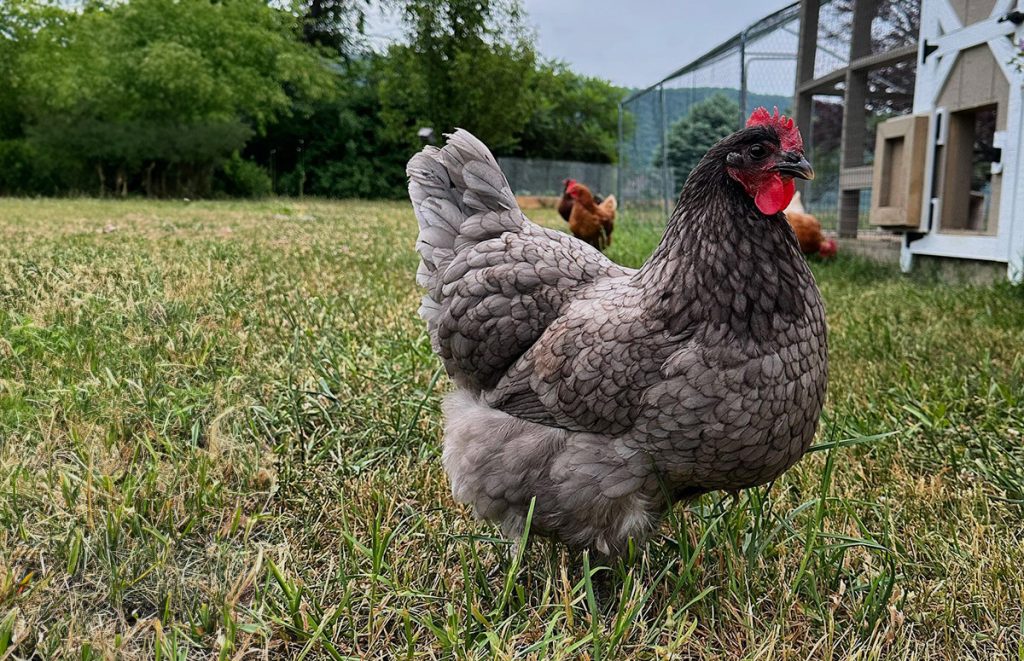
The hens tip the scale at 7,5 pounds, while the large fowl roosters are around 9,5 pounds. The Plymouth Rock is one of the smaller breeds among the heavier breeds. Pullets come in at 6 pounds, and cockerels 8.
Eggs
The Blue Plymouth Rock is known as a dual-purpose breed and produces a decent amount of eggs. They typically lay around 200 medium-sized brown eggs per year, and start their egg-laying cycle at around four to six months of age.
Depending on the climate you live in, some hens will even continue laying eggs throughout the winter. Although Blue Plymouth Rocks are not generally known as broody chickens, it’s important to remember that, being chickens, they may show maternal tendencies and a desire to hatch their eggs.
The Plymouth Rock is often kept as an exhibition bird, and specific genetic strains are selectively bred to emphasize particular traits such as looks and color. Sometimes, these show-oriented lines will lay fewer eggs than the Blue Plymouth Rock you keep in the backyard.
Meat Production
Plymouth Rocks are a well-liked choice for a delicious dinner, known for their tender and tasty meat. They are a great choice if you plan to live a self-sustainable life.
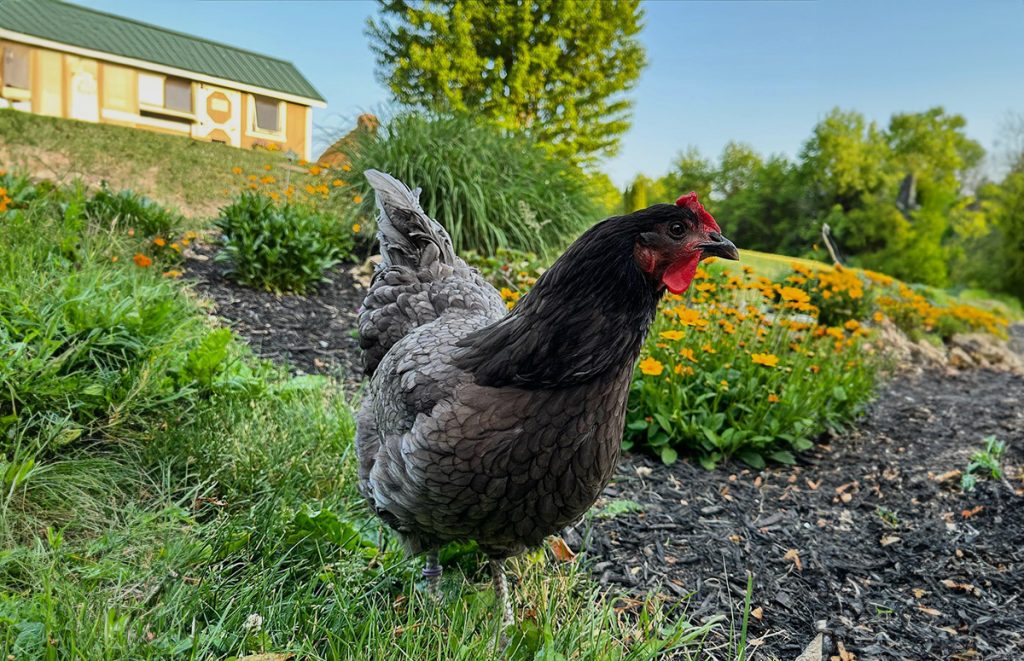
The modern broiler industry relies on hybrid chicken breeds, mostly a mix of Cornish chickens and Plymouth Rocks. These broilers reach market weight within a few weeks. In contrast, Plymouth Rocks take several months to get the age to be harvested.
This extended growth period means they require more food before they are ready for processing, making them a less favorable option for the broiler industry, but they are an excellent choice for households.
Blue Plymouth Rock Hen vs Rooster
Blue Plymouth Rock hens and roosters show some resemblances, particularly in their plumage colors, making it challenging for those unfamiliar with the breed to differentiate between them.
However, the key distinction lies in their feathering. Let’s go over the contrasting features between Blue Plymouth Rock hens and roosters:
| Feature | Blue Rooster | Blue Hen |
|---|---|---|
| Weight | 9.5 lbs | 7.5 lbs |
| Back | Pointed saddle feathers | Rounded feathers |
| Plumage | Black with green sheen | Black with green sheen |
| Tail Feathers | Long sickles, pointed | Shorter, rounded on the edges |
| Comb, Wattles | Big, red | Small, pink |
| Body | Large and broad with long legs | Smaller, shorter legs |
Roosters are characterized by their long, curved, and prominent tail feathers, commonly called “sickle feathers.” These sickle feathers are absent in hens. Additionally, roosters typically tend to be larger compared to their female counterparts.
Climate
Plymouth Rock chickens are cold-hardy and do well in the winter. They have always been popular with small flock keepers because they are hardy foragers. However, their comb can suffer from frostbite.
They don’t like hot summers, so they need plenty of shelter and spaces with shade. They aren’t a Mediterranean breed, after all. If you live in a warm or tropical environment, it’s best to keep chicken breeds that don’t suffer from the heat as much as cold-hardy breeds do. Go for the Ancona, Sicilian Buttercup, or Andalusian instead.
History of the Blue Plymouth Rock
The Plymouth Rock was originally developed in the United States and first appeared at a Boston poultry exhibition in 1849. While the name “Plymouth Rock” was coined there, the initial attempts to establish the breed were unsuccessful. The name “Plymouth Rock” pays homage to the iconic rock found on the landing site of the English Pilgrims who founded the Plymouth colony in 1620, Massachusetts.
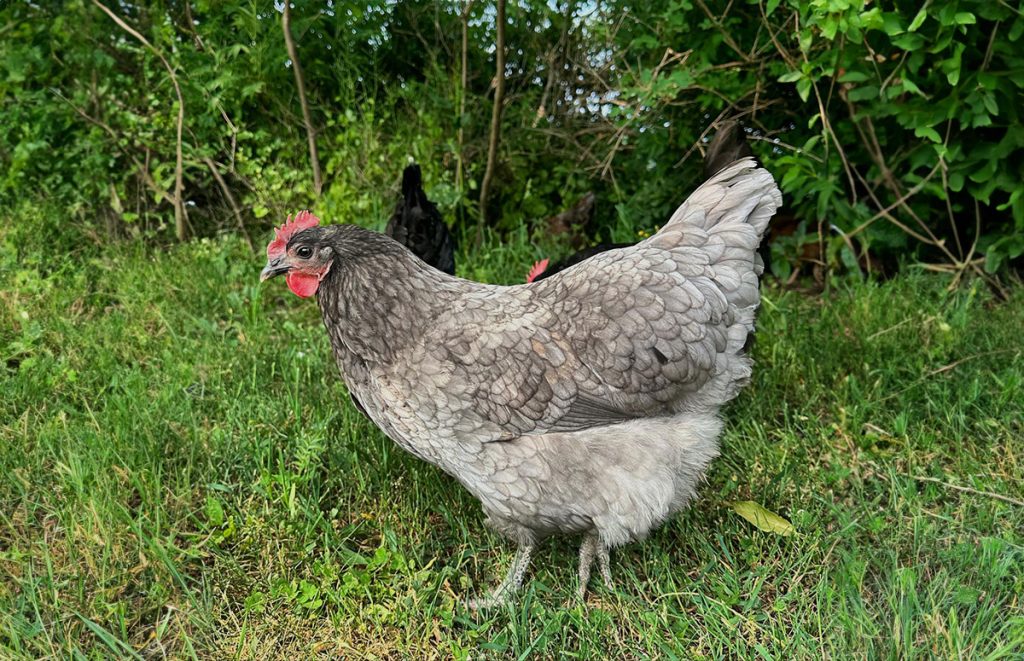
It was only after the Civil War in 1869 that the Plymouth Rock breed began to gain traction. One of the original breeders, D.A. Upham, played a pivotal role in Plymouth Rock’s early development. He initiated the breeding process by crossing Black Cochins and Black Java chickens with a common Dunghill rooster with a single comb and barred feathers. Through meticulous selective breeding, he identified pullets with clean yellow legs and barred feathers.
In 1874, the American Poultry Association formally recognized the Plymouth Rock breed, albeit in a form quite distinct from its current appearance, closely resembling the Dominique chicken.
Initially, there was only the Barred Rock, which was then used as a foundation to create new variations. In 1884, the White Plymouth Rock was introduced. The Buff Plymouth Rock emerged in 1890, created by cross-breeding White Rocks and Rhode Island Reds. The Silver Penciled variation followed in 1907.
In the early 1900s, Partridge Plymouth Rocks and Columbian Plymouth Rocks made their debut. Bantam Barred Rocks were recognized in 1940, followed by the Blue, Buff, Columbian, Partridge, and Silver Penciled bantam varieties in 1960. The Black variation was only added to the list in 1990.
Personality
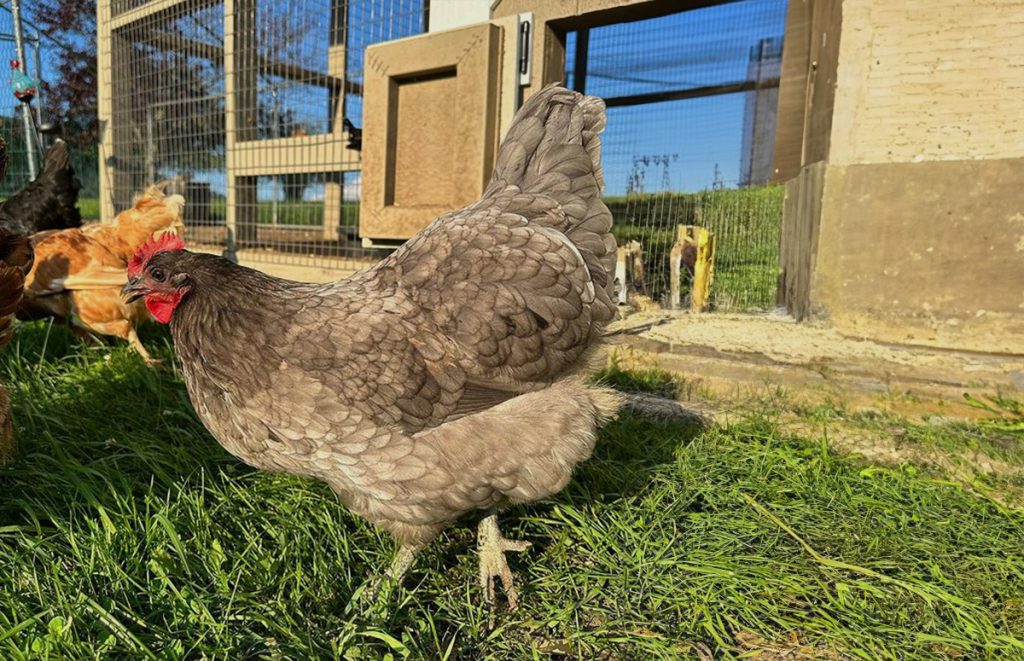
Plymouth Rocks are known for their calm, gentle, and friendly nature. They get along well with other chickens and are equally friendly towards humans. In fact, they will often accompany you in the chicken run or the garden when you bring them food or do some chores.
These chickens can be so amiable that some owners treat them as “lap chickens” and enjoy stroking and petting them. However, it’s worth noting that Plymouth Rocks can be quite heavy, which might not be ideal for small children.
Plymouth Rock roosters are typically good-natured leaders of the flock. With a little effort, they can be managed and handled with ease. They tend to be far less aggressive than roosters from other breeds, and effectively maintain the harmony within the flock without being overly dominant.
Further Reads
Some other articles we like to mention:
- Chicken Feather Guide: to understand the difference between all types of feathers
- Chicken Breeding & Genetics: an overview for chicken breeding and genetics for beginners
- Cochin Chickens: large chicken breed initially used to create the Plymouth Rock
- Barred Plymouth Rock: the first variety of the Plymouth Rock chicken
- Plymouth Rock: an overview of the Plymouth Rock chicken breed and the color varieties
Credits for the images and special thanks go to Oh Happy Hen.






















